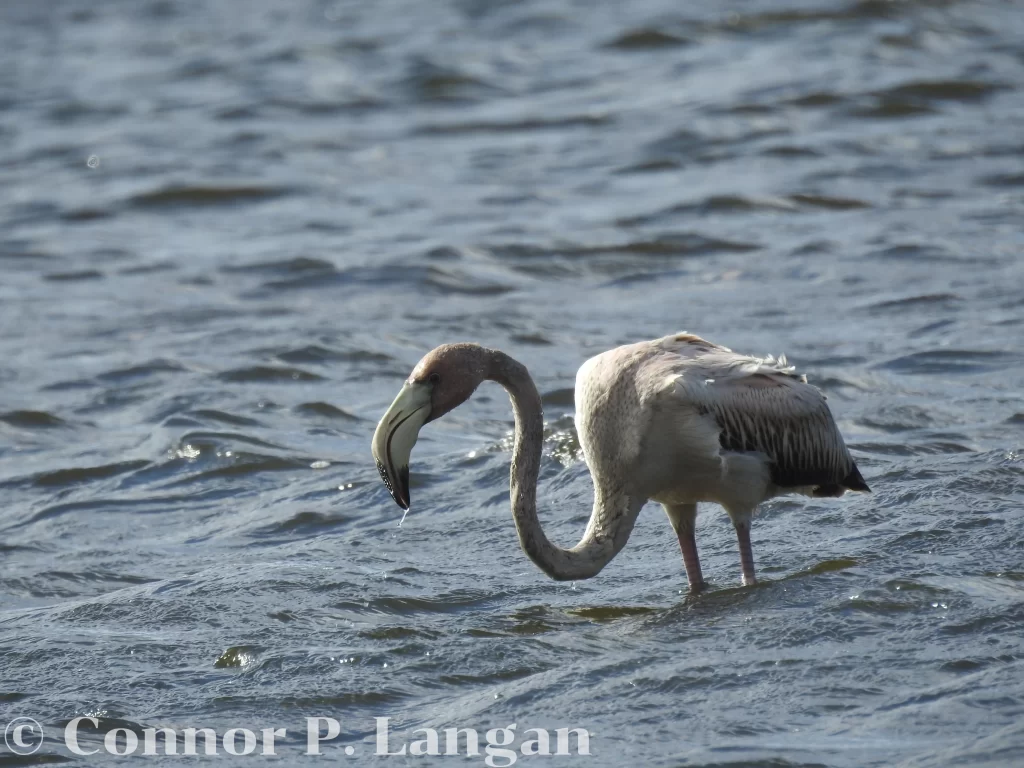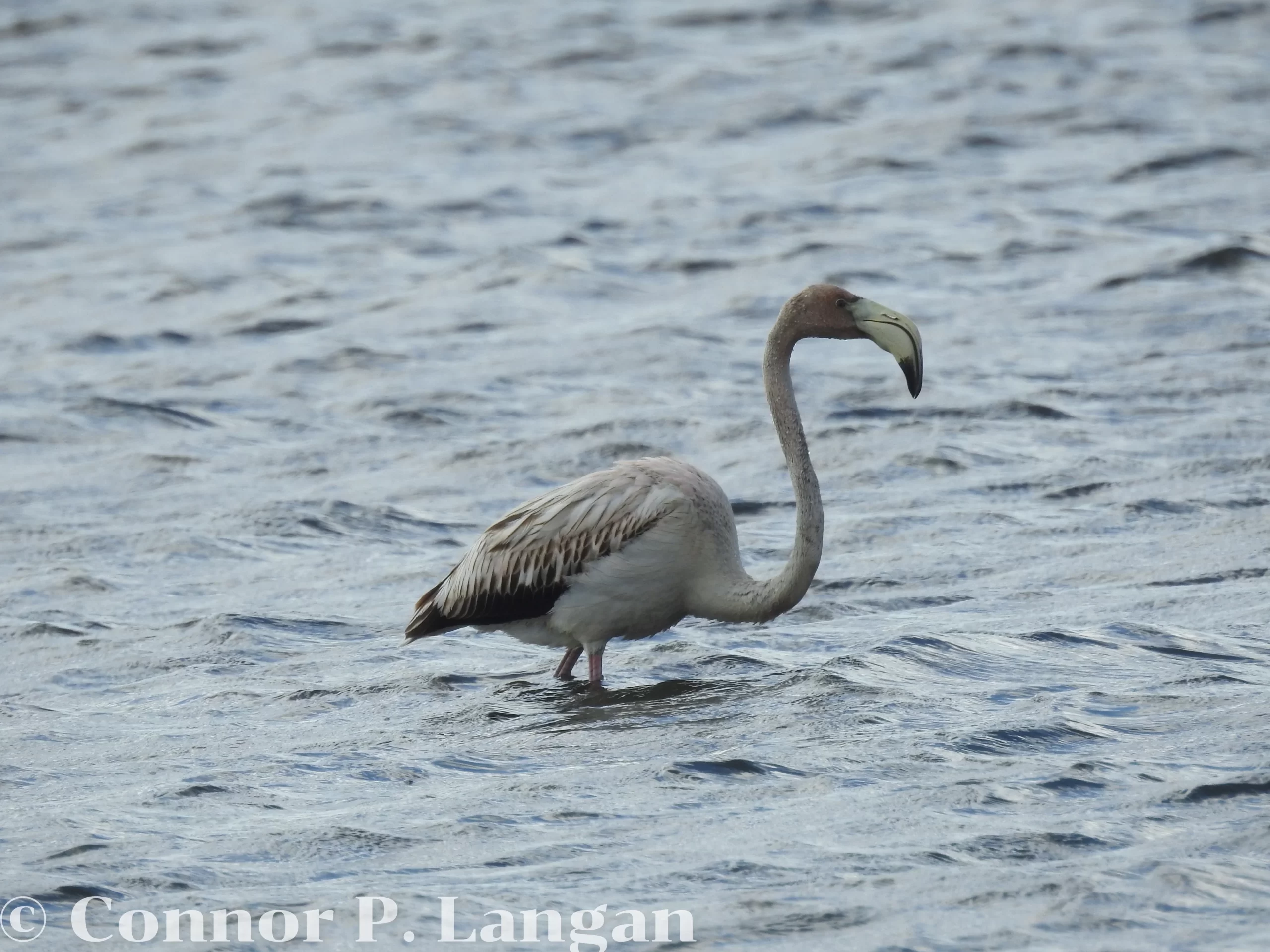Everyone knows that adult flamingos are a vibrant shade of pink, but what color are flamingos when they are born? Are flamingos born pink?
Contrary to what many believe, flamingos are not inherently pink. These birds are mostly gray when they are born. Flamingo plumage turns to a mix of white, brown, and gray as they progress through their juvenile and immature stages. It isn’t until birds reach adulthood at two to three years old that they obtain their trademark pink color.
Table of Contents

Why Do Flamingos Turn Pink?
Okay, so we know that flamingos are not pink when they’re born, but this begs the question: How do flamingos get their pink color if they aren’t born with it?
The pink coloration of flamingos is gradually acquired over time thanks to the diets of these birds. Therefore, flamingos turn entirely pink about the time in which they make the transition to adulthood.
Do Flamingos Eat Shrimp?
You may have heard that flamingos are known to consume shrimp. Do flamingos turn pink from eating shrimp? While flamingos do consume shrimp, these creatures are not entirely responsible for giving flamingos their pink coloration.
Rather, a combination of shrimp, other tiny crustaceans, algae, insects, and seeds help to give flamingos their unique coloration. Flamingos can thank carotenoids for their pink coloration. These compounds are found in a variety of plants including various algae. When flamingos consume algae or eat shrimp that eat algae, their bodies convert the carotenoids into pink coloration.
Do Flamingos Eat Fish?
Some are curious if flamingos eat fish in addition to the other foods that comprise their diets. Well, flamingos are known to eat small fish, but these creatures do not comprise a large part of their diets. Moreover, fish contribute very little to the pink color that flamingos develop.
It seems that flamingos are like geese in that they only rarely consume fish.
Do Flamingos Lose Their Pink?
We now know why flamingos are pink, but is it possible for these birds to lose their distinct coloration once they’ve acquired it? Surprisingly, flamingos are known to lose their pink coloration even after they have acquired it.

So, why do flamingos lose their pink? Well, such instances occur when a flamingo undergoes an annual molt. A molt is an instance an which a bird gradually sheds its old feathers and replaces them with new feathers.
Fresh flamingo feathers are grayish in coloration just like the feathers of a young flamingo. Before long, the feathers obtain their trademark pink coloration once again as the individual birds feed on foods rich in carotenoids.
Do White Flamingos Exist?
Some around intrigued about the possibility of a white flamingo. Is it possible for a flamingo to have white feathers?
Yes, flamingos can have white feathers! Young flamingo chicks that recently hatched from their eggs tend to have a fresh, white coloration. As chicks age, their feathers gradually take on gray and brown colors before obtaining pink coloration. Adult flamingos do not tend to have any white feathers. The exception would be flamingos that are either leucistic or albino.
Both of these conditions result in a natural lack of pigmentation in the feathers of a bird. Therefore, birds appear to be primarily white overall. Birds that have these mutations will be white for the entirety of their lives – they will not grow out of their white appearance with age. However, know that both of these mutations are rare, so your chances of observing a mature white flamingo are slim.
Do Flamingos Lay Eggs?
Those curious about flamingo reproduction often wonder if these birds lay eggs. Rest assured, flamingos do lay eggs. Those familiar with bird ecology will not be surprised by this, as all bird species produce eggs. Flamingos are no different, as these birds produce a single clutch of eggs annually.

How Many Eggs Do Flamingos Lay?
Like parrots and penguins, flamingos are a long-lived bird species. This means that they do not produce many eggs annually. In fact, female flamingos often produce just a single egg each year. Some flamingos may produce two eggs, but more than 2 eggs annually would be quite rare.
The low birth rate of flamingos makes it difficult for populations to rebound following declines. This has led to several species of endangered flamingos.
Do Flamingos Have Pink Eggs?
Some may be disappointed by the answer to the question, “What color are flamingos when they are born?”. At least flamingo eggs are pink, right?
Although a pink egg would look really cool, flamingo eggs are not pink. Instead, these birds lay chalky, white-colored eggs. Those interested in seeing a pink egg will have to settle for the pastel-colored eggs that can be seen around Easter time.
Do Flamingos Lose Their Color When They Have Babies?
One of the rumors about flamingos is that females lose their color when they have babies. Although some flamingos may lose their coloration soon after laying eggs, this is merely a coincidence. The process of reproducing is certainly energy intensive, but it does not cause flamingos to lose their pink coloration.
How Do Flamingos Feed Their Babies?
Flamingos are regarded as good parents, with both mom and dad tending to the needs of their young. Young flamingos can walk soon after hatching, but they are not very good about feeding themselves until they’re more than one month old.

Therefore, young flamingos rely on their parents to provide them with food. It is perfectly normal for bird parents to feed their young, but plenty of weird questions about flamingo parenting have arisen. Perhaps the strangest question is, “Do flamingos feed their babies blood?”.
Flamingos certainly do not feed blood to their babies. This odd curiosity may have come about after seeing flamingos feed their young. After all, adult flamingos feed a regurgitated, brine-like substance to their young. To some, this solution may look like blood. In reality, it is a combination of all of the foods that adult flamingos eat.

